Bulk Gum Ammoniac for Export – Wholesale Ammoniacum Resin Supplier
ACPFOOD supplies bulk gum ammoniac for export to international wholesale resin buyers, natural gum importers, and bulk herbal ingredient distributors. Also known as Ammoniacum gum or Dorema ammoniacum, this traditional natural plant resin is widely used in pharmaceutical manufacturing, incense production, and herbal medicine formulations. Our product is carefully sourced, cleaned, and packaged for B2B supply chains, bulk packaging orders, and private label producers seeking high-grade botanical gums for specialized applications.
English Name: Gum Ammoniac
Other Names in English (UK, USA, Canada, South Africa, Australia, New Zealand): Dorema, Ammoniacum Gum, Ammoniacum Gummi, Gummi Ammoniacum
Family: Apiaceae
GENERAL DATA
Plant parts: Gum
Cultivation mode: Wild collection
In manufacturing: Pharmaceutical, cosmetic, skin care, perfumery, dyeing manufacturing, jewelry, glue, detergent.
In food: Confectionary.
Industries That Use Gum Ammoniac
Here’s a professional and structured industry breakdown for Gum Ammoniac, also known as Ammoniacum or Ferula gum, derived from Ferula ammoniacum or Dorema ammoniacum.
1. Pharmaceutical & Traditional Medicine Industry
Gum Ammoniac has a long history in Persian, Greek, Unani, and Ayurvedic medicine and is still valued in modern herbal pharmacopoeias.
-
Expectorant & Mucolytic:
-
Loosens phlegm and clears mucus from lungs and throat
-
Used in syrups and cough remedies
-
-
Antispasmodic:
-
Treats asthma, bronchitis, and convulsive coughing
-
Also used for some muscular or intestinal cramps
-
-
Topical Pain Relief:
-
Applied as poultice for joint pain, rheumatism, or swollen glands
-
-
Menstrual Support (traditional):
-
Used in some regional formulations to stimulate menstruation
-
✅ Commonly used in tablets, decoctions, balms, and patches
2. Veterinary & Livestock Medicine
-
Used in traditional veterinary practices for:
-
Respiratory infections in livestock
-
Inflammatory conditions in animals
-
Natural deworming and digestive tonics
-
✅ Especially prevalent in rural animal care traditions in the Middle East and Central Asia
3. Herbal & Nutraceutical Industry
Though niche, it’s used in formulations for lung health, detox, and digestive cleansing.
-
Added to:
-
Detox teas and tinctures
-
Bronchial support capsules
-
Natural anti-inflammatory herbal blends
-
Often paired with other resins and warming botanicals in traditional mixtures
✅ Valued in natural and artisanal perfumery, similar to Galbanum or Myrrh
5. Cosmetic & Skincare Industry (Traditional Use)
-
Rarely used in mainstream cosmetics, but traditionally applied for:
-
Skin inflammations, boils, abscesses
-
Warming balms for muscle and joint pain
-
Natural soap-making for its scent and healing properties
-
6. Artisan & Industrial Applications
-
Historically used in:
-
Varnish making and resin-based adhesives
-
Components in oil paints and natural lacquers
-
✅ Still explored in natural material crafting and heritage restoration
7. Academic & Scientific Research
Current areas of study include:
-
Bronchodilatory and antitussive effects
-
Antibacterial and antifungal potential
-
Chemical composition of sesquiterpenes and resins
✅ Summary of Key Applications
| Industry | Common Uses |
|---|---|
| Pharmaceutical & Herbal | Expectorant, antispasmodic, pain balm, detox remedies |
| Veterinary Medicine | Respiratory aid, inflammation care in livestock |
| Nutraceutical | Lung support capsules, natural detox, digestive tonics |
| Perfumery & Aromatherapy | Fixative in perfumes, incense blends |
| Cosmetic (Traditional) | Skin salves, herbal soaps, warming ointments |
| Artisan/Industrial | Natural varnishes, adhesives, art restoration |
| Academic Research | Respiratory benefits, antibacterial analysis |
🌱 Key Features:
-
100% wild-harvested oleo-gum-resin
-
Strong expectorant and warming properties
-
Used for respiratory, musculoskeletal, and detox support
-
Highly valued in traditional Eastern medicine and artisanal crafts
🟡 Comparison Table:
Gum Ammoniac vs White Fasoukh vs Galbanum vs Asafoetida Resin
| Feature / Aspect | Gum Ammoniac(Ferula ammoniacum) | White Fasoukh(Ferula communis L.) | Galbanum(Ferula gummosa Boiss.) | Asafoetida (Hing)(Ferula assa-foetida L.) |
|---|---|---|---|---|
| Plant Family | Apiaceae | Apiaceae | Apiaceae | Apiaceae |
| Plant Part Used | Resin from stems | Resin from stems/roots (varies by region) | Gum resin from root incisions | Gum resin from root incisions |
| Color | Yellowish-brown to amber | Pale yellow to beige | Greenish-yellow to brown | Dark brown to reddish-brown |
| Texture | Soft when fresh, brittle when dry | Waxy to resinous | Granular or tear-like; sticky when warm | Lumpy, sticky resin that hardens with age |
| Scent / Aroma | Sharp, pungent, ammonia-like | Mildly aromatic, bitter | Strong, piney, green & musky | Strong, sulfurous, garlic-like odor |
| Taste | Bitter, acrid | Mildly bitter | Bitter, earthy, resinous | Bitter and pungent |
| Main Constituents | Resin acids, gum, essential oil | Resin, coumarins, essential oils | Terpenes (α-pinene, β-pinene, limonene), resins | Ferulic acid, sulfur compounds, resin, gum |
| Traditional Medicinal Uses | – Expectorant- Anti-inflammatory- Asthma aid | – Traditional rituals (North Africa)- Mild antiseptic | – Anti-inflammatory- Antispasmodic- Wound healer | – Carminative- Digestive aid- Nervine tonic |
| Industrial Applications | – Plasters & liniments- Veterinary medicine | – Ethnomedicine- Ritual incense in Africa | – Perfumery (as fixative)- Aromatherapy | – Spice in cooking- Herbal medicine |
| Cultural/Spiritual Uses | Some ritual use in Central Asia | Spiritual cleansing (esp. in Maghreb regions) | Sacred incense in ancient Egypt & Persia | Ayurvedic & Unani medicine systems |
| Main Producing Regions | Iran, Afghanistan | Morocco, Algeria, Tunisia, parts of Iran | Iran (Zagros Mountains), Central Asia | Iran, Afghanistan, India |
| Market Form | Lumps, powder, tinctures | Dried resin chunks, incense blends | Tears, powder, tinctures | Lumps, powder, commercial “Hing” blocks |
🗝️ Key Highlights:
-
🧄 Asafoetida is the most well-known and widely used resin in culinary and Ayurvedic medicine.
-
🌿 Galbanum has a distinct aromatic profile and is valued in perfumery and ancient incense traditions.
-
🟡 Gum Ammoniac is less aromatic but useful as a topical remedy and was historically used in plasters and medicated resins.
-
⚪ White Fasoukh is primarily ethnobotanical, used for spiritual protection and ritualistic practices, especially in North Africa.
HARVEST CALENDAR
Feb
Mar
Apr
May
Jun
Jul
Aug
Sep
Oct
Nov
Dec
To order Ammoniacum Gum, please contact us.
About Dorema Ammoniacum
Gum Ammoniac is derived from plants of the Apiaceae family. It is a perennial plant and in the form of a shrub, its stem is thin and covered with fine light yellow hair, which gives the plant a cotton color. Dorema ammoniacum’s flowers are reddish-blue. This plant grows in Iran and India. To obtain the gum, the stems of the plant are cut with a blade, and the gum comes out, which hardens in the presence of air.
Ammoniacum Gum is marketed as a clear mass on which cracks and bright yellow lines can be seen. The color of the good and clean type is white. Its taste is bitter and it has a special smell, and if it is mixed with water, a milky liquid is made, which tastes bitter.
Three species grow from this plant, from which Gummi Ammoniacum is obtained, which belong to the Apiaceae family, and their scientific names are as follows:
1- Dorema ammoniacum D.Don (Ferula ammoniacum (D.Don)). In Iran, the name of this plant is Kandal, Kema and Oshagh.
2- Dorema aucheri Boiss. (Ferula aucheri (Boiss.)). In Iran, it is known by the local name of Kemaie Asb, and in the western regions of Iran, it is known as Zoo.
3- Dorema aureum Stocks (Ferula downieorum Spalik) which grows in Baluchistan and its local name is Oushouynar.
In the market, it is sometimes intentionally or unintentionally mixed with Sagapenum and Asafoetida gum, which can be recognized and separated through its color, smell, and taste.
To order Ammoniacum Gum , please contact us.
In terms of chemical compounds, Glucuronic acid, Galactose, Arabinose, Rhamnose and a Ketone are found in Ammoniacum, which is obtained from Dorema ammoniacum plant.
Ammoniacum Gummi is slightly soluble in water, but it dissolves better in pure alcohol and vinegar. Its best solvent is 22-degree alcohol.
To order Ammoniacum Gummi , please contact us.
Dorema Temperament
Third degree of hot and first degree of dry.
Gum Ammoniac Health Benefits
Gum Ammoniac is diuretic, emmenagogue, removes swellings, laxative, and anthelmintic. Improves allergy, chronic bronchitis, shortness of breath and lung diseases. It expels rotten phlegm and the dead fetus and relieves back pain and sciatica. Eating a large amount of Ammoniacum Gum eliminates liver and spleen blockages. Eating this resin with water kills intestinal worms and removes moisture from the stomach.
Eating this gum with honey is useful for shortness of breath, colds, stiffness of the spleen, facial nerve paralysis, epilepsy and convulsions. Eating it with vinegar strengthens the spleen. Also, eating it with barley decoction helps to treat shortness of breath and lung diseases.
Gum Ammoniac poultice is useful for healing injuries, stiffness and swelling of joints, swelling of the liver, swelling of the spleen, stiffness of the eyelids, and scrofula. Its poultice with vinegar improves stiffness of the joints, skin diseases, and vitiligo.
Its poultice is useful for removing excess flesh and growing new flesh on the body. Washing the body with Dorema ammoniacum gum solution helps a lot to get rid of hives. Applying a mixture of Ammoniacum Gum, Henna and olive oil on the hair removes dandruff. Rubbing it in the eyes is useful for removing eye moisture and eyelid acne.
In India, Gum Ammonia oleoresin is prescribed to loosen chest congestion, stimulant, antiseptic and in cases of colds, flu, asthma, chronic bronchitis and in people suffering from enlarged liver and spleen.
Gargling Gum Ammoniac solution with warm water is useful for cold convulsions and cold and moist brain diseases such as dizziness, lassitude, facial nerve paralysis and palpitation which is caused by phlegm and black bile, because it absorbs and expels phlegm.
Its paste with vinegar is useful for removing extra hair in the eyelids and removing blurred vision.
If 5 grams of it is mixed with non-alcoholic beer, until a thick solution is obtained. It is useful for shortness of breath and difficulty in breathing. If this resin is mixed with honey, it is useful to expel slimy moisture from the chest, dysuria, pelvic pain, and sciatica and joints pain.
If 2-5 grams of it is soaked in warm water or suitable infusions and eaten, it is good for pelvic pain, lower back pain, sciatica, and dissolution of wind accumulated in the stomach, crushing bladder stones and killing intestinal worms and if eaten alone or with vinegar, it is useful for glycogen hepatitis, spleen, ascites and hardening of the testicles.
- If you eat Gum Ammoniac with honey, it is useful for treating epilepsy, paralysis and limbs paresthesia, and convulsions which is caused by moist. It is useful for purifying the chest from sticky moisture, relieving the difficulty of urinating, relieving the pelvic pain, and sciatica and joint pains.
- Soak 2 to 5 grams of Ammoniacum Gummi in warm water and eat it. It is useful for relieving flank pain, back pain, analysis of flatulence, crushing bladder stones and killing intestinal worms.
- Mix 5 grams of Gum Ammoniac with non-alcoholic beer and make it into a paste and eat it. It is useful for treating shortness of breath and relieving difficulty breathing.
- Dissolve Ammoniacum in hot water and gargle it. It is useful for relieving cold convulsions and cold and moisten brain diseases such as dizziness, lethargy, Parkinson and black bile and phlegm suffocation.
To order Gummi Ammoniacum please contact us.
Preparation Instruction for Purifier Ammoniacum
Grind some Gum Ammoniac and dissolve it in 60-degree alcohol on heat and press the solution through a cloth and then evaporate it in water bath heater and remove the alcohol. So that if some of it is poured into cold water, it freezes and sticks to the fingers. 0.6-4 grams of this purifier Ferula ammoniacum is used as an anti-convulsant and anti- rheum.
To order Dorema aucheri please contact us.
Ferula Ammoniacum Gum Dosage
Gum Ammoniac dosage is 5-10 grams for strong adults, 5 grams for people with average stamina, and 1-2 grams for weak people.
Gum Ammoniac Side Effects
Kidney and stomach.
Caution should be exercised in eating Gum Ammoniac and it should be consumed under the supervision of a doctor, because eating too much of this gum causes widening of the blood vessels which may disturb the balance of the blood flow, and for this reason, it is mixed with laxatives.
Taking too much of this resin is harmful and causes blood in the urine. It is also harmful to the kidneys.
To order Ammoniacum, please contact us.
Gummi Ammoniacum Modifiers
Vinegar.
Anise (Pimpinella anisum) should be used when blood is found in the urine.
Sweet almonds, starch and Hyssop(Hyssopus officinalis L.) in case of kidney problems.
🧴 Nutrition Facts – Gum Ammoniac (Ferula ammoniacum L.)
Serving Size: 5 g (typical dose in traditional herbal use)
Calories: ~20 kcal
| Nutrient | Amount per 5g | Per 100g |
|---|---|---|
| Total Fat | 0.3 g | 6.0 g |
| • Saturated Fat | 0.1 g | 1.5 g |
| Cholesterol | 0 mg | 0 mg |
| Sodium | 1.0 mg | 20 mg |
| Total Carbohydrate | 4.2 g | 84.0 g |
| • Dietary Fiber | 0.8 g | 16.0 g |
| • Natural Sugars | 0.2 g | 4.0 g |
| Protein | 0.2 g | 4.0 g |
Phytochemical & Functional Compounds (Per 100g):
| Bioactive Compound | Content | Functional Role |
|---|---|---|
| Sesquiterpene lactones | Present | Anti-inflammatory, antimicrobial |
| Ferulic acid derivatives | Trace | Antioxidant |
| Essential Oils | 1–2% | Aromatic, expectorant |
| Resins & Gums | 70–85% | Emulsifying, mucilaginous activity |
| Sulfur compounds | Trace | Antiseptic, pungent aromatic effect |
🌿 Gum Ammoniac is a traditional oleo-gum-resin used in ancient and modern herbalism—especially in expectorant formulations and topical plasters for joint and respiratory ailments.
⚠️ Not a conventional food item. Use only in accordance with herbal and pharmaceutical standards.
Percent Daily Values are based on a 2,000-calorie diet. Nutritional estimates may vary depending on resin age and processing.



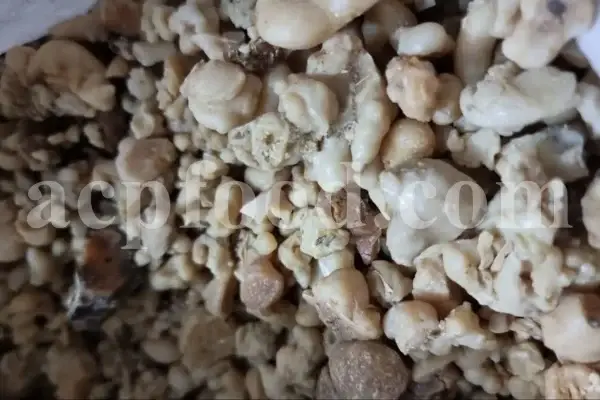
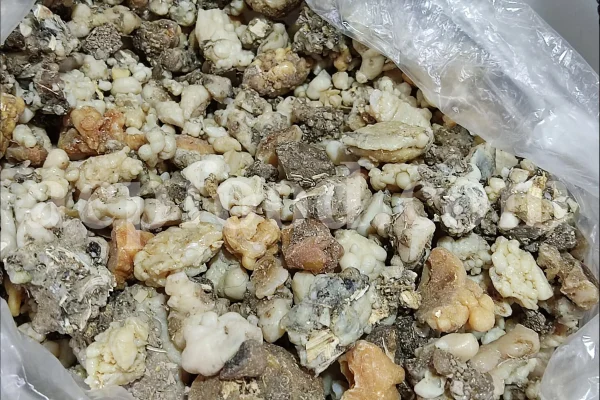
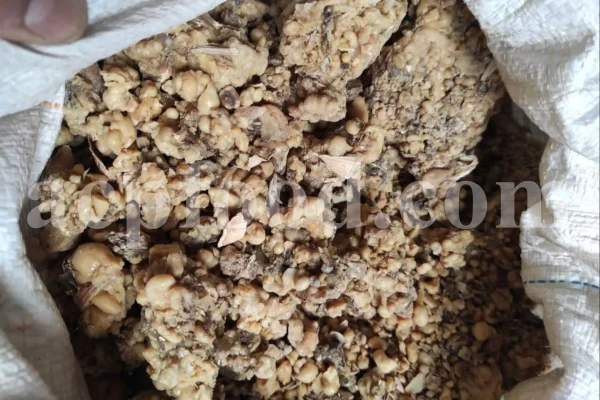
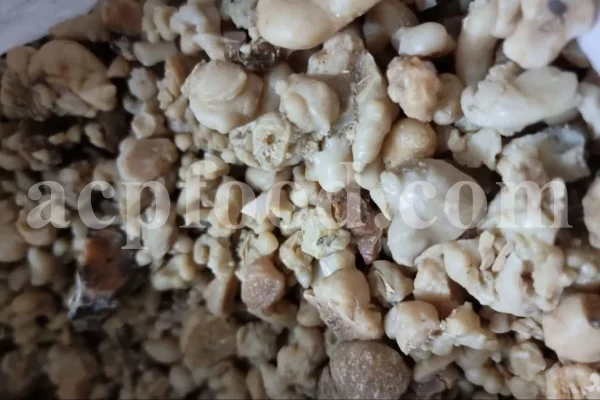
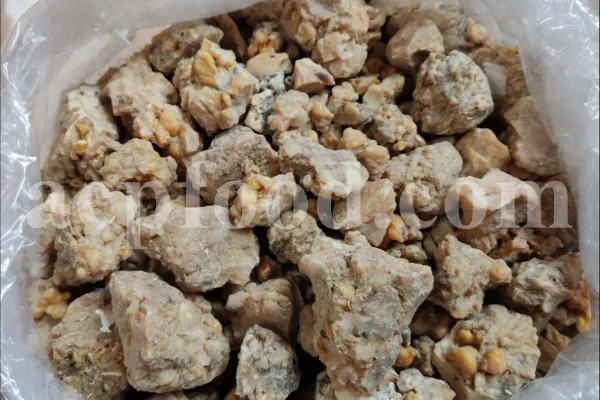
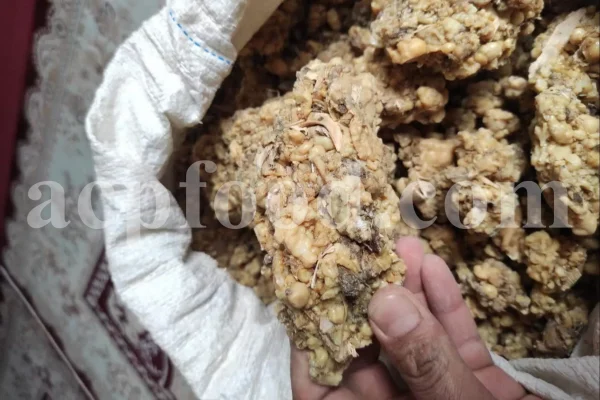
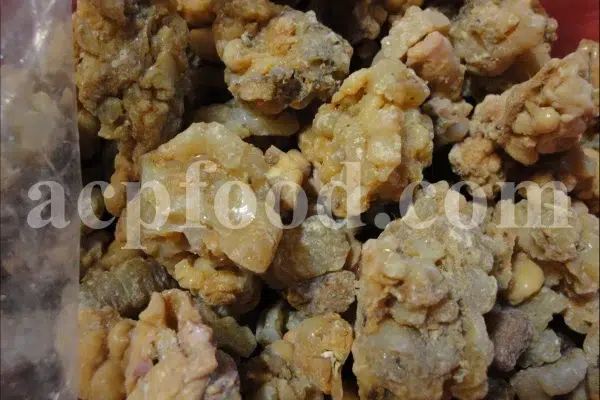
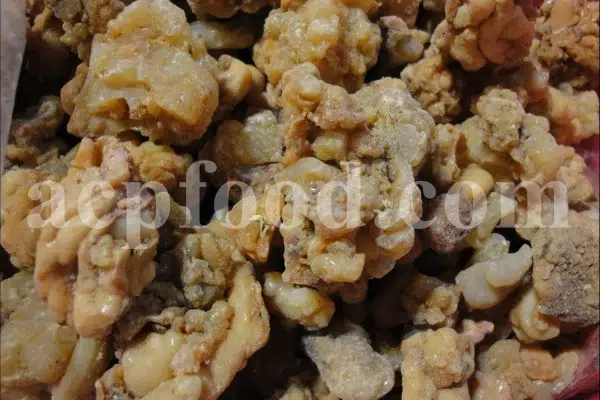

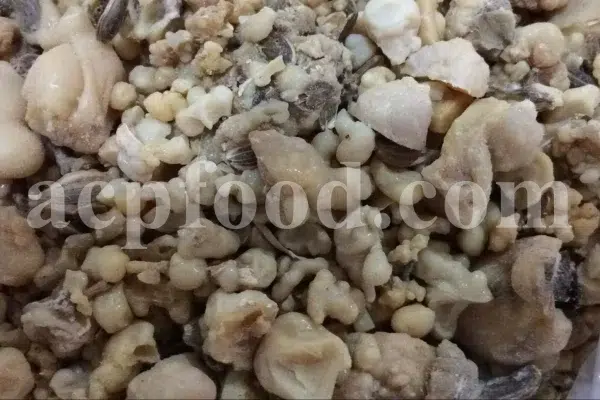
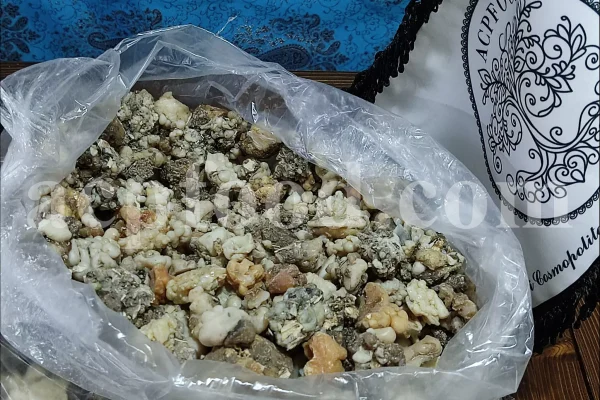
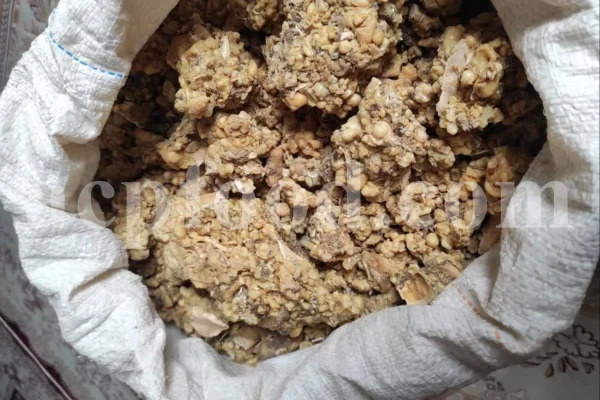
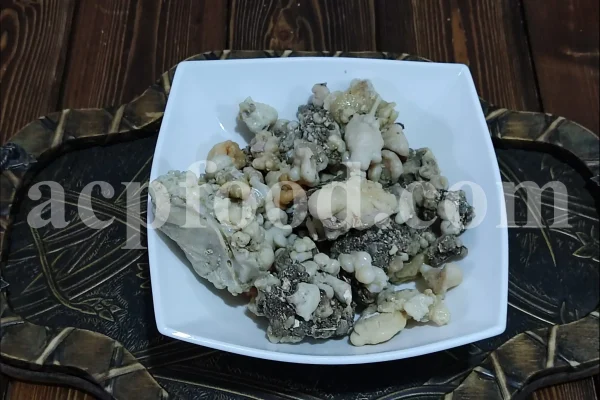
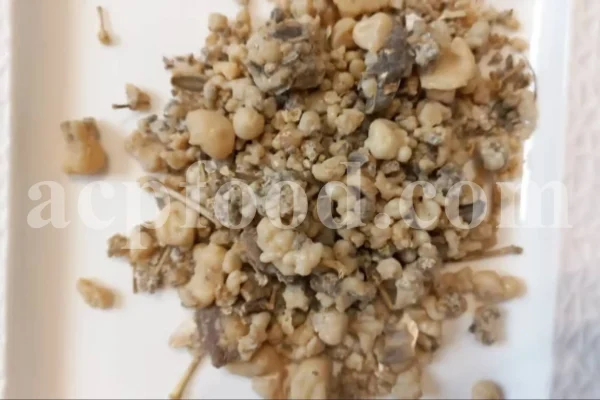
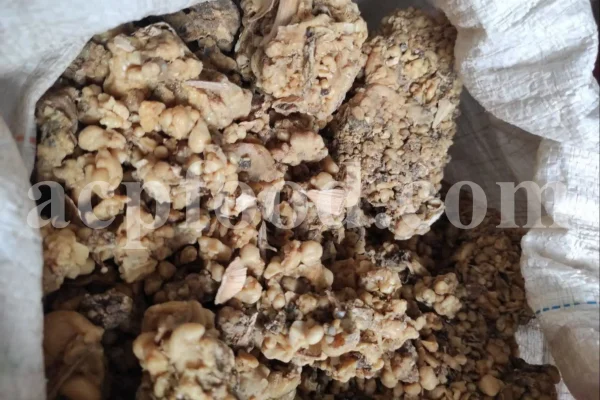
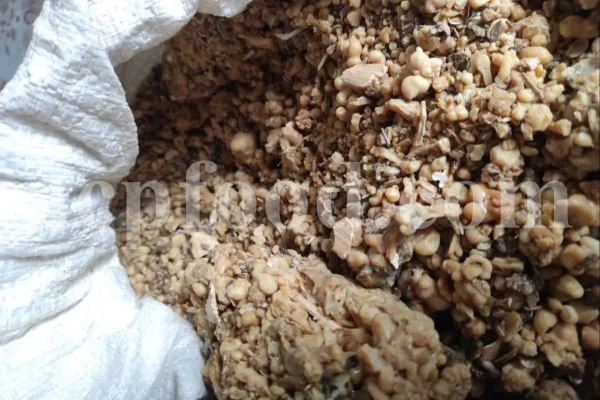

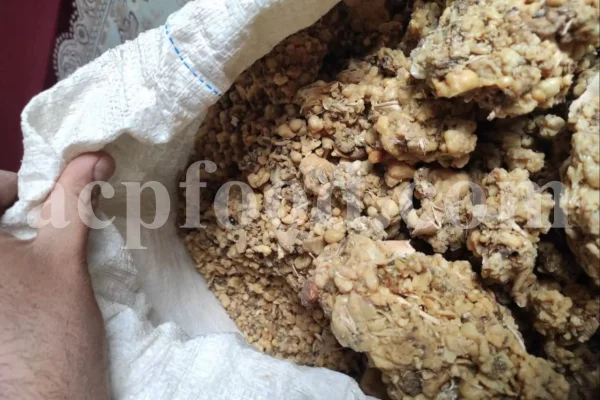
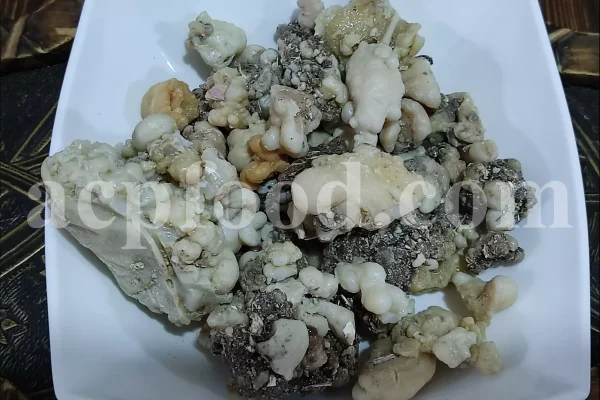
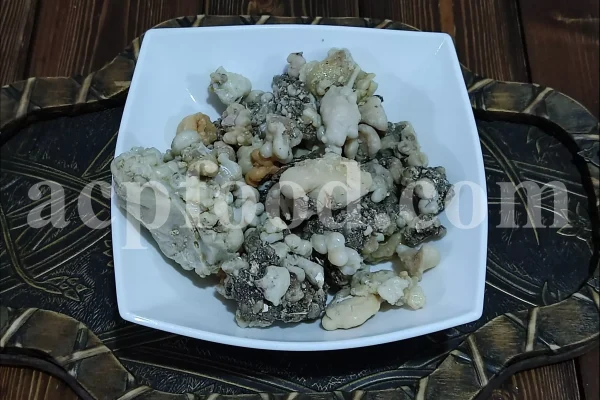
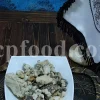

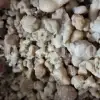

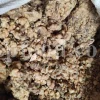
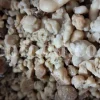
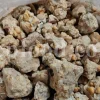
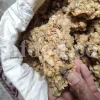
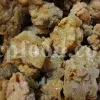
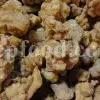

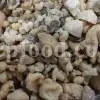
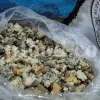
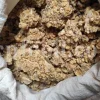
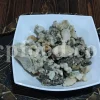
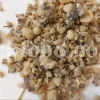
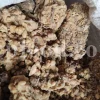
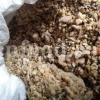
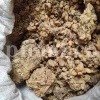
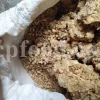
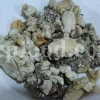
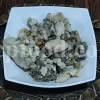

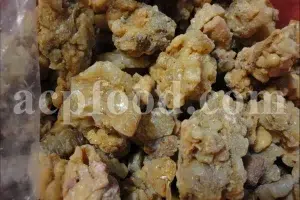
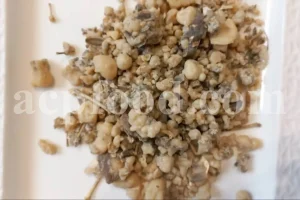
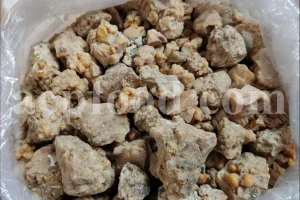
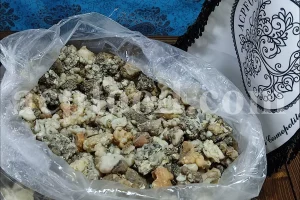
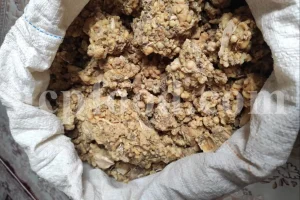
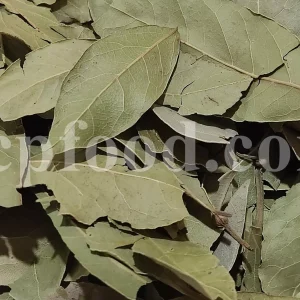
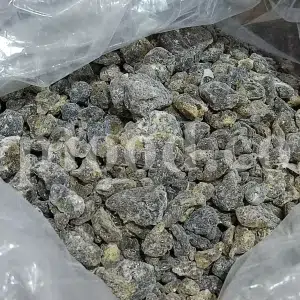


Reviews
There are no reviews yet.